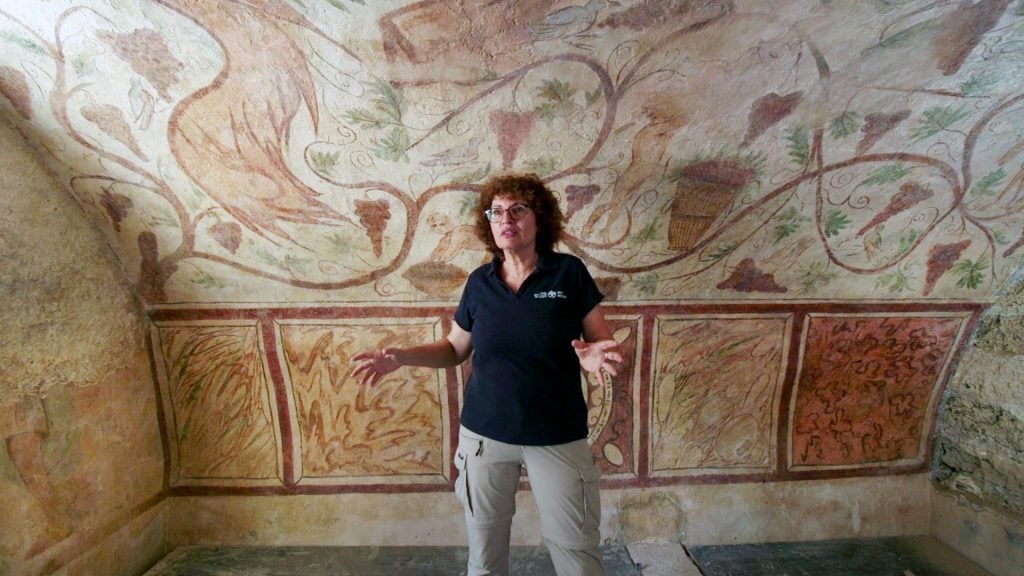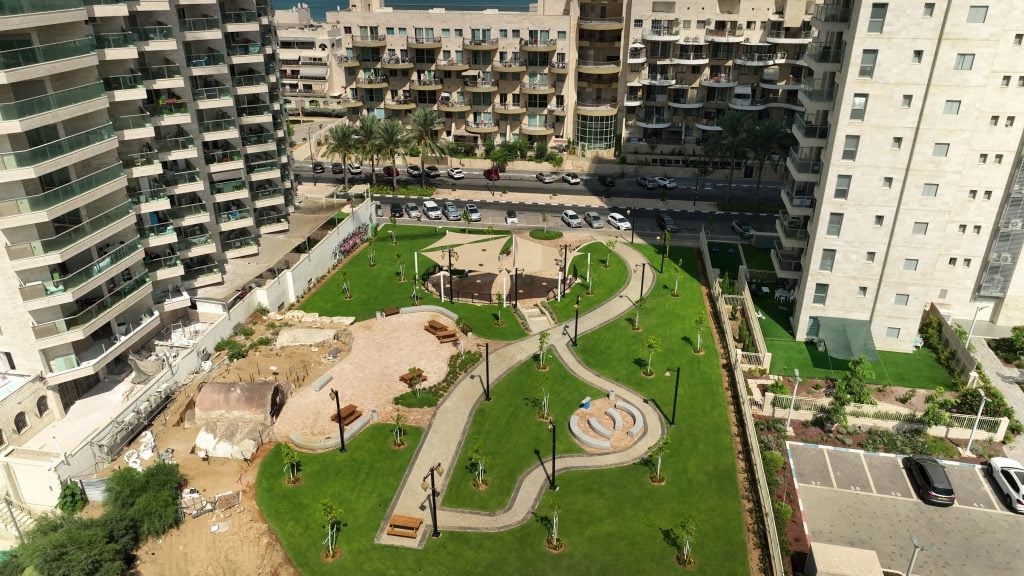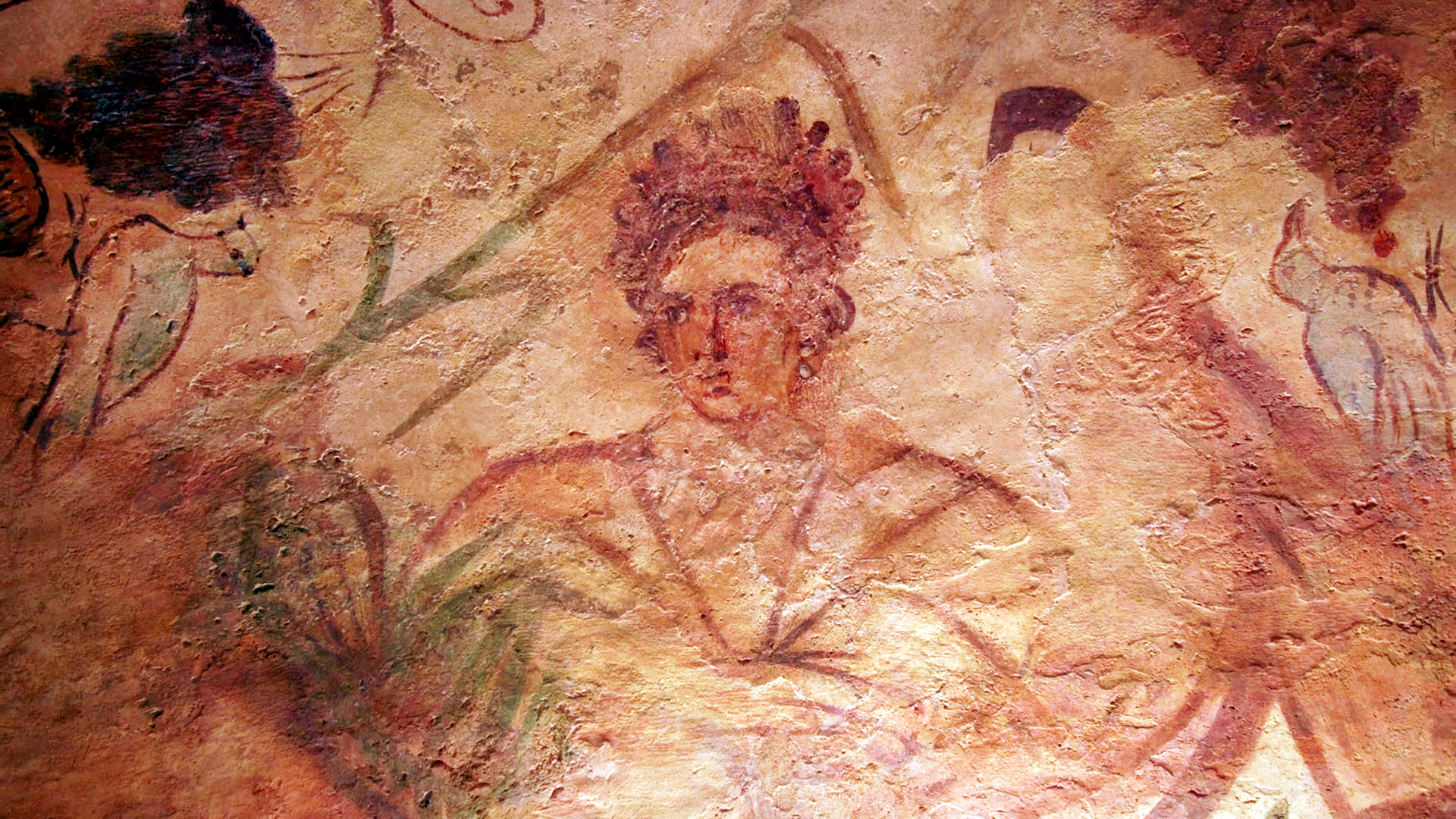A pair of ancient tombs featuring paintings of Greek mythological characters, in one of the world’s oldest urban areas, will soon be open to the public. Located in the Israeli coastal city of Ashkelon, the tombs would have housed the remains of the city’s wealthy and are believed to be at least 1,700 years old. Their wall paintings, the likes of which are rarely found in the region, feature characters like Demeter, goddess of earth and grain, as well as the head of Medusa, the infamous gorgon whose gaze turned her victims into stone.
Also appearing in the paintings are nymphs whose heads are adorned with lotus plant wreaths, pouring out water from pitchers; various birds; deer; children picking bunches of grapes and gathering them into baskets; and a figure playing Pan’s flute.
It has taken a long time for the tombs to be ready for their close-up. The first was discovered in the 1930s, about 1,000 feet from the beach. Excavated by British archaeologists, it was dated back to the 4th century C.E., when Israel was part of the Byzantine Empire. The structure consists of a central hall giving way to four adjacent burial troughs.
The conservation and restoration work of the Israel Antiquities Authority conservators.
The second tomb is older still, dating to the 2nd century C.E. Excavated by Israel Antiquities Authority employee Elena Kogan-Zehavi in the 1990s, its walls are similarly decorated with paintings of animals, plants, and human figures.
Such paintings are rarely found in Israel, and the newly revealed ones have never been seen by the public. Over recent months, conservation experts at the Antiquities Authority have worked to restore the images.
“Ancient wall paintings are usually not preserved in Israel’s humid climate,” Mark Abrahami, head of the Antiquities Authority, said in a statement. “As the paintings were in a relatively closed structure it protected them, to some extent, for decades.”

Elena Kogan-Zehavi, Israel Antiquities Authority, who uncovered one of the tombs about 30 years ago. Photo: Emil Aladjem, Israel Antiquities Authority.
That’s not to say the wall paintings were in perfect condition.
“Naturally, exposure of the centuries-old paint to air and moisture caused fading and weathering,” Abrahami continued. “We had to conduct a long and sensitive process to stop and repair the ravages of time and weathering. Some paintings had to be removed from the walls for thorough treatment in the Israel Antiquities Authority’s conservation laboratories, until they were returned to the site. The other walls of the structure were cleaned, the pigments in the colors of the paintings were accentuated, and the entire building was strengthened and stabilized to preserve it for future generations.”

The new Archaeological Park in Ashkelon. Photo: Emil Aladjem, Israel Antiquities Authority.
The tombs can be found in Ashkelon’s marina, in between residential buildings. As part of an urban planning project, the city turned the site into a public garden, inviting residents and tourists alike to explore remnants of the city’s distant past. In addition to the opening of the tombs (the Antiquities Authority has yet to announce a specific date), the agency has helped restore several other heritage sites in Ashkelon, including a public park in the Wine City neighborhood, a mosaic on Yekutiel Adam Street, and a display of ancient artifacts on Kadesh Boulevard, among others.
The renovation of the tombs is part of a larger project between the municipality of Ashkelon and the Antiquities Authority to redevelop the city’s numerous heritage sites.
Follow Artnet News on Facebook:
